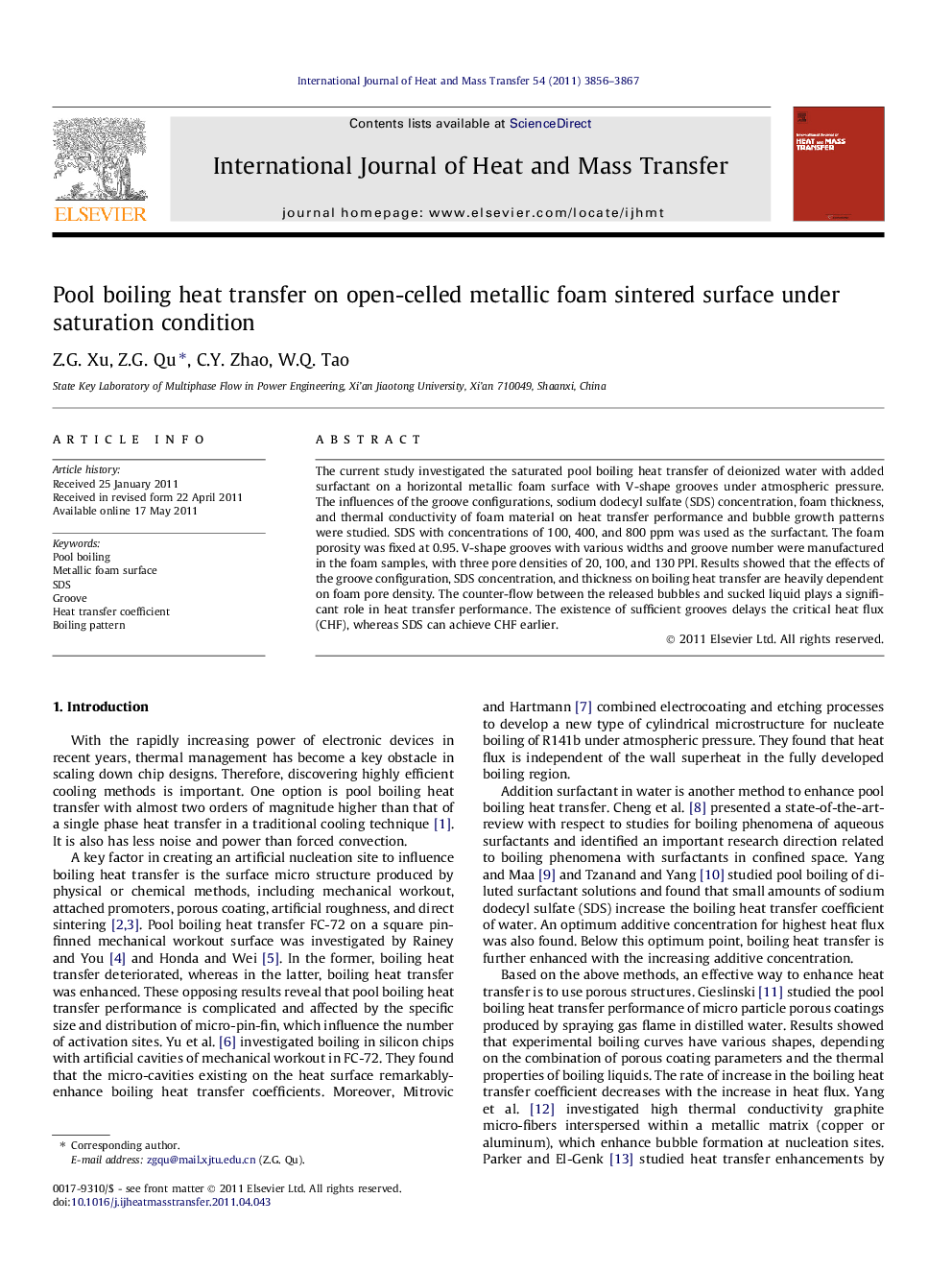| Article ID | Journal | Published Year | Pages | File Type |
|---|---|---|---|---|
| 659680 | International Journal of Heat and Mass Transfer | 2011 | 12 Pages |
Abstract
The current study investigated the saturated pool boiling heat transfer of deionized water with added surfactant on a horizontal metallic foam surface with V-shape grooves under atmospheric pressure. The influences of the groove configurations, sodium dodecyl sulfate (SDS) concentration, foam thickness, and thermal conductivity of foam material on heat transfer performance and bubble growth patterns were studied. SDS with concentrations of 100, 400, and 800Â ppm was used as the surfactant. The foam porosity was fixed at 0.95. V-shape grooves with various widths and groove number were manufactured in the foam samples, with three pore densities of 20, 100, and 130Â PPI. Results showed that the effects of the groove configuration, SDS concentration, and thickness on boiling heat transfer are heavily dependent on foam pore density. The counter-flow between the released bubbles and sucked liquid plays a significant role in heat transfer performance. The existence of sufficient grooves delays the critical heat flux (CHF), whereas SDS can achieve CHF earlier.
Related Topics
Physical Sciences and Engineering
Chemical Engineering
Fluid Flow and Transfer Processes
Authors
Z.G. Xu, Z.G. Qu, C.Y. Zhao, W.Q. Tao,
